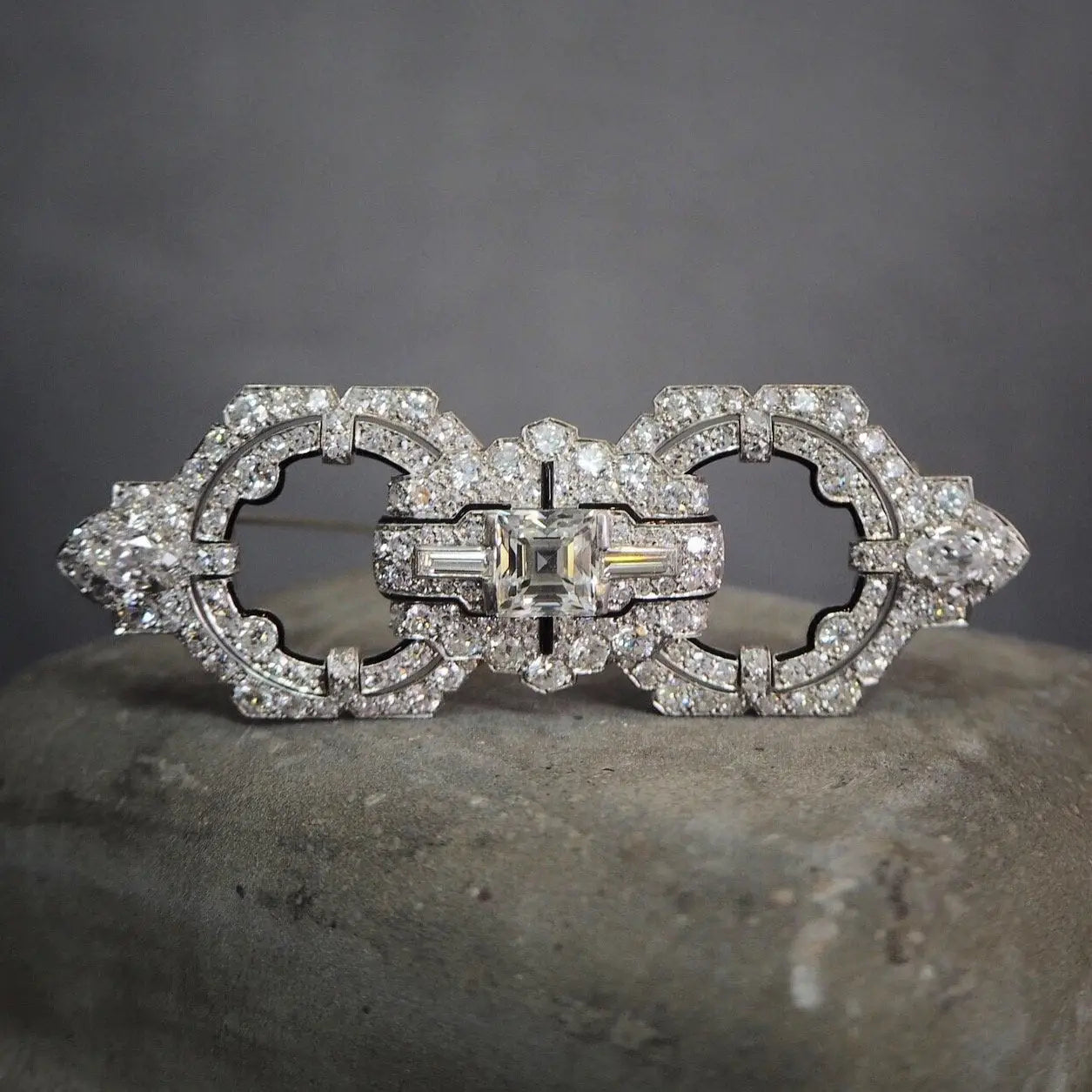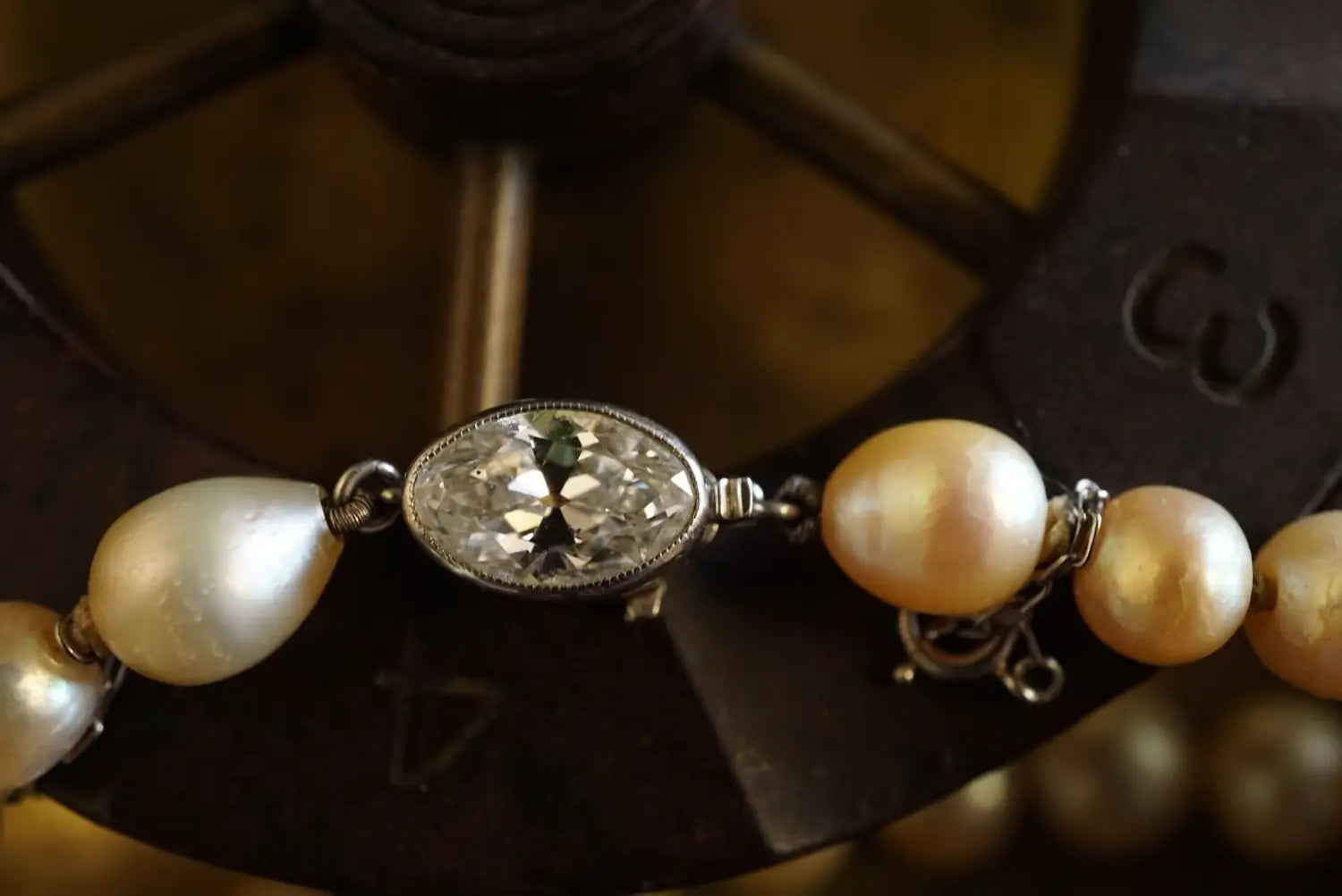
Cartier
Since its genesis over 170 years ago, Cartier has been a dominant force in the jewelry industry, adorning the elite all around the world: from Europe, to Asia, and into the United States. Cartier was then, and remains now, the crème de la crème of jewelry houses, and the iconic brand bears a fascinating history.
The Start of the Journey
In the year 1847, Louis-Francois Cartier went to work at 29 Rue Montorgueil, where he got his start as a jeweler’s apprentice. Through the years, Cartier worked his way up and eventually moved the shop to 9 Rue Neuve-des-Petits-Champs, where Maison du Cartier was born. At this time, Cartier was open solely for private customers and was considered very exclusive and reputable - but not yet famous. In the years to come, this would all change, and Cartier would soon be designing pieces for royalty throughout Europe and eventually around the globe.
After moving his showroom to the heart of Paris on the Boulevard des Italiens, Cartier grealy increased his exposure and soon caught the attention of Charles Frederick Worth: the creator of what is known in the fashion world as haute couture. This business relationship would launch Cartier’s career and make him a major player in the world of couture jewelry. Two generations later, his grandson, Louis-Joseph, would marry Charles Fredick Worth’s granddaughter, Andrée-Caroline Worth, solidifying the connections between the two families even further.
Royal Attention
In 1855, the House of Cartier received a visit from the Countess of Nieuwerkerke, who, over the next couple of years, would purchase and commission fifty-five Cartier pieces. Princess Mathilde, niece of Napoleon I, was next to discover Cartier and had multiple items crafted by him. Eventually, Empress Eugene became a loyal client of the house.

Soon afterwards, Cartier was specially appointed to become the jeweler of many royal houses. Between the years 1904 and 1939, there were 15 royal warrants given to Cartier, making him the official jeweler to the crowned heads of Europe. At this time, Edward VII described Cartier as being “jeweler of kings” as well as “king of jewelers”. Eventually, everyone who was anyone in Europe wanted to make an appearance at Cartier.
A New Era
In 1874, Alfred Cartier took over his father’s shop on Boulevard des Italiens and was joined in 1898 by his son, Louis-Joseph. Alfred was skipped over for the inheritance of Maison du Cartier, and Louis-Joseph was handed the business. This proved to be a very smart decision.
Louis-Joseph Cartier was a savvy businessman and led the company into a completely new era. It was Louis-Joseph’s decision to move the firm to the Rue de la Paix in the most elite area of Paris, which multiplied the house’s exposure greatly. At the time, the popular design aesthetic was moving toward Art Nouveau, a movement led by great artists such as René Lalique. This trend would not go unnoticed by Louis-Joseph - however, he stood his ground and moved forward without embracing these new design trends, setting his company apart from the rest of the market.
Louis-Joseph Cartier loved all gems, but his true passion laid with diamonds. Throughout his career, he sought out ways to make diamonds the focal point of his jewelry designs, which eventually led him to the creation of the “garland style”: an optimal way of showcasing the beauty of the stones.

A "garland style" Cartier necklace from 1912, made with aquamarine and diamond (photo source: ArtNet.com)
Though Cartier made progress with the creation of the “garland style”, he remained discontent with the fact that the sterling silver which he used to set his diamonds was far too malleable and tarnished much too easily. This is when he began using a brand new metal on the market: platinum. With his use of platinum, Louis-Joseph was able to create all-new, exciting items with perfect form and symmetry, while emphasizing the importance of the empty space in his designs just as much as the design itself. Louis wanted the diamonds to be showcased with all of their fire and brilliance, and he accomplished this in his bow, tassel, and lace motifs which are still seen to this day.
Worldwide Advances
The next phase of the Cartier journey was to build an empire that spanned the globe, and so, the three Cartier brothers each chose a different country to set up shop. In 1902, Jacques opened a boutique in London, while Pierre opened a New York salon eight years later. There was also a partnership in St. Petersburg.
In 1904, Louis was approached by long-time friend and aviator Alberto Santos-Dumont to create a timepiece that he could use in flight without taking his hands off of the controls. This led to the creation of the first men’s wrist watch, named for the famous aviator - and “The Santos” remains a staple for the brand to this day. Before the creation of The Santos, wrist watches were worn only by women and were camouflaged into bracelets. The watch mechanism was never a focal point, and it was considered bad manners to be checking time in the presence of others. Cartier’s creation of The Santos would lead to a revolution in the way people perceived both watches and time.
The famous "Santos de Cartier" remains a Cartier staple to this day (photo source: Monochrome-Watches.com)
The Fifth Avenue Mansion and Cartier Collections Through Time
The story of how Pierre acquired the Fifth Avenue Mansion, which is, to this day, the home of the Cartier flagship store, is an interesting one. In 1917, Pierre traded a Manhattan banker 100 US dollars and a double-strand pearl necklace valued at over $1 million for the building. The Cartier mansion, which is located on one of the most affluent blocks in New York City is now a global headquarters, as well as an impressive showcase for the brand.
A very wide array of products has come out of the Maison du Cartier - most notably, the Panthere Collection, created in 1914 and inspired by “The Panther” Jeanne Toussaint. The Panthere Collection included jewelry, lighters, pens, and watches.
The Trinity Collection is another well-known Cartier collection. This collection was created in 1925 and combined tones of white, rose, and yellow to symbolize friendship, love, and fidelity. The line, which was simple and elegant, included tri-metal interlinked rings, bracelets, and earrings.
One of the most famous Cartier collections to this day would have to be the LOVE Collection, which was introduced in the 1970s and presented a unique take on the medieval chastity belt. The two pieces of the LOVE Collection bracelet are placed on the wrist, then screwed in place with a special key. Originally, the bracelets were only sold to couples and symbolically “shackled” the two in a bond of unity and commitment. The bracelet can now be sold to anyone - whether it’s for someone special or as a treat for oneself. 
Cartier's LOVE bracelet, which was first introduced in the 1970s, continues to be a favorite from the brand (photo source: SCMP.com)
Another recurring theme by the company is the inspiration and motifs borrowed from Asian, Indian, and Islamic cultures. This was a passion of Jacques Cartier, who travelled all over the Eastern hemisphere finding inspiration anywhere he could. Many of the house’s items from the Art Deco era show strong influences of these cultures, presenting lifestyles and aesthetics very much different from what was seen in Western civilization at the time.
Cartier Collectors
Many noteworthy people were avid collectors and admirers of the prolific Maison du Cartier. In 1928, the Maharaja Bhupinder Singh commissioned a necklace from the house, which became known as the Patiala Necklace. The magnificent creation contained 2,930 individual diamonds and weighed in at almost 1,000 carats.

The Patiala Necklace, created by Maison du Cartier in 1928 (photo source: Milanese Gal)
In the 1930s, Daisy Fellows, editor of Paris Harper’s Bazaar and daughter of the Duke of Decazes and Isabella Singer (heir to the Singer sewing machine company), had perhaps one of the most well-known necklaces made for herself. This stunning bib-style necklace was a mixture of faceted and hand-carved sapphires, rubies, and emeralds, all beautifully set in platinum. Known as the “Tutti Frutti Necklace”, this ornate piece gained worldwide attention and paved the way for a new, eclectic style that would be carried into Cartier’s (as well as other jewelers’) bracelets, tiaras, earrings, and rings.
In the 1940s, Mexican actress Maria Felix is said to have taken her pet baby crocodiles into Cartier Paris, to have a necklace made in their likeness. The substantial necklace was made to look like two crocodiles wrapping around the back of her neck, with their heads at the front. One of the crocodiles is set with 1,060 emeralds and ruby eyes, while the other is encrusted with 1,020 diamonds and emerald eyes. This piece and a few others from Felix’s collection are now on display at the Cartier exhibition in Paris.
The 1950s opened up a doorway between Cartier and the glamorous Hollywood elite. For the Alfred Hitchcock film Stage Fright, actress Marlene Dietrich commissioned many pieces to be worn while filming. Dietrich was a longtime admirer of the brand and over the years developed quite an impressive Cartier collection. One of her favorite things to collect was men’s cufflinks; she adored wearing menswear and would have menswear-inspired pieces made just for her, all the way down to her shoes.
Prince Rainier of Monaco purchased a ruby and diamond eternity band for his engagement to Grace Kelly; however, after visiting America and seeing the country’s “bigger is better” mentality, the prince went to Cartier and had a 12-carat diamond and ruby wedding ring made, along with a matching tiara and 58-carat diamond necklace set in platinum.
Perhaps one of the most historic and famous items from the house is the Taylor-Burton diamond necklace, designed by Oscar Heyman for Cartier. The world class diamond at the center of this piece was cut by Harry Winston and sold at auction, where Richard Burton was outbid by a Cartier representative. Slightly vexed by the situation, Burton approached Cartier the next day and purchased the piece for $1.1 million as a gift for his wife at the time, Elizabeth Burton. This purchase was made under the condition that Cartier would be allowed to display the stone at their salons in New York and Chicago.
Over 6,000 people per day went to catch a glimpse of the Taylor-Burton diamond. Sometime after her divorce from Richard Burton, Elizabeth Taylor auctioned off the piece to help build a hospital in Botswana - this time, the necklace reached a price of $5 million. Since then, the stone has passed hands more than once, making its way all the way down to Robert Mouwad, founder of the Gemological Institute of America.

The legendary Taylor-Burton diamond, a gift from Richard Burton to Elizabeth Taylor that was designed by Oscar Heyman for Cartier (photo source: The Stone Set)
Withstanding the Test of Time
Since the company’s genesis in 1847, Cartier has stood out as one of the most followed and collected brands in history. With their inventive designs and stylistic simplicity, it’s easy to see why Cartier is the chosen jewelry house for so many special events and noteworthy collectors. From great heads of state, to the faces gracing the silver screen - Cartier will always be the “jeweler of kings” and “king of jewelers”.


